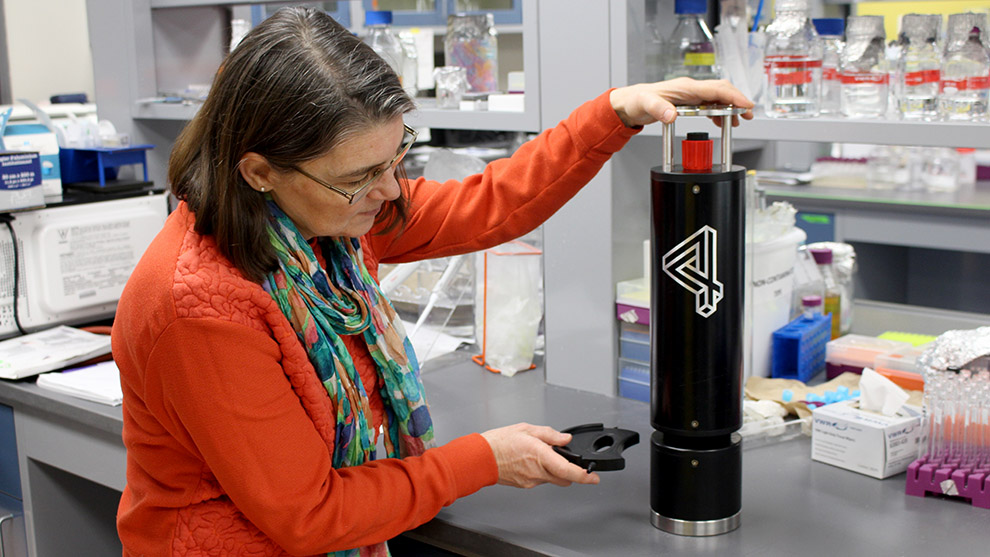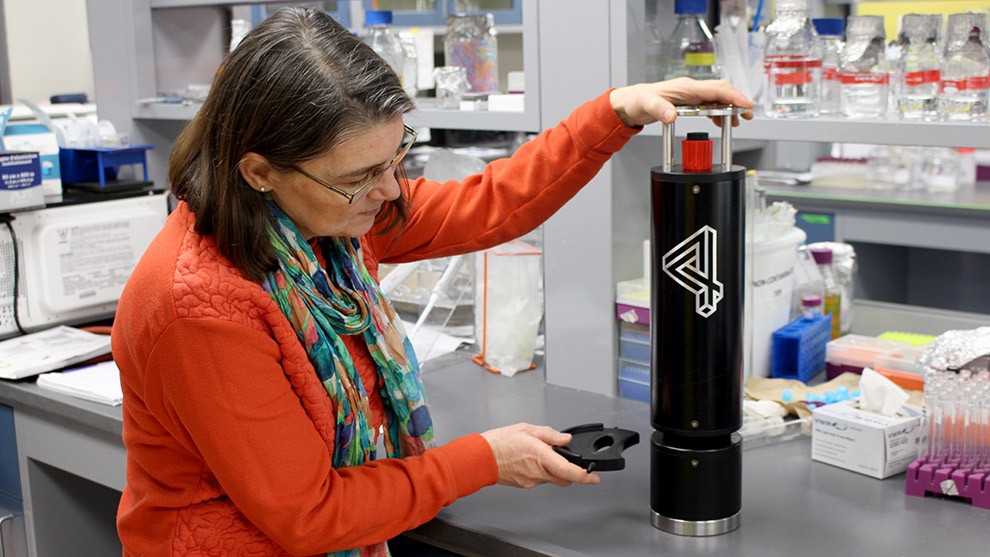Ocean Science
Dalhousie gets boost for plankton research
Commercial ship will be outfitted with a holographic microscope for ongoing research

caption
Julie LaRoche demonstrates the holographic microscope she will use in her upcoming plankton project.
caption
Julie LaRoche demonstrates the holographic microscope she will use in her upcoming plankton project.In just a few months, Dalhousie researcher Julie LaRoche will be able to see weekly fluctuations in plankton off Nova Scotia.
LaRoche found out last week she received $149,900 in funding for her plankton research project.
This money allowed her to purchase a holographic microscope and put it on board the Atlantic Condor – a commercial ship that makes weekly trips to the Deep Panuke drilling station near Sable Island.
The microscope will let LaRoche see and analyze the plankton without being on the Condor as it does its weekly cruises.
Dalhousie’s Canada Excellence Research Chair Doug Wallace already had funding to put other instruments on the ship. These will monitor the nutrients in the water, as well at pH levels, carbon dioxide levels, temperature and salinity.
LaRoche’s project will add specific biological measurements to the data collected by these instruments.
This weekly research will help create a baseline of what plankton production looks like in Nova Scotia.
“We just want to see the productivity – what’s blooming at what time of the year,” LaRoche said.
This information, correlated with patterns in pH, salinity, carbon dioxide and others, will help researchers identify changes in the ocean and make predictions.
“If we have a lot of information … about when phytoplankton is blooming in the ocean,” she said, “then we’re going to be better able to predict what happens on the higher trophic level” – with animals like fish.
LaRoche’s funding came from the Dalhousie-based Marine Environmental Observation Prediction and Response Network (MEOPAR) and Irving Shipbuilding.
MEOPAR and Irving announced funding on Feb. 17 for LaRoche’s project and eight others across Canada.
MEOPAR, which started in 2012, focuses on “strengthening Canada’s ability to anticipate and respond to marine risk,” said Janet Stalker, communications manager.
Marine risk includes everything from oil spills to ocean acidification to hurricanes.
Irving Shipbuilding, as part of the National Shipbuilding Procurement Strategy, has to spend 0.5 per cent of its contract revenues on creating a sustainable Canadian marine industry.
MEOPAR contributed $800,000 to the funding for all nine projects; Irving contributed $1 million.
About one-third of LaRoche’s funding went towards the holographic microscope. The rest will be used to pay the students working on the project.
LaRoche’s research will start in the next two or three months. She intends to continue it for several years.

